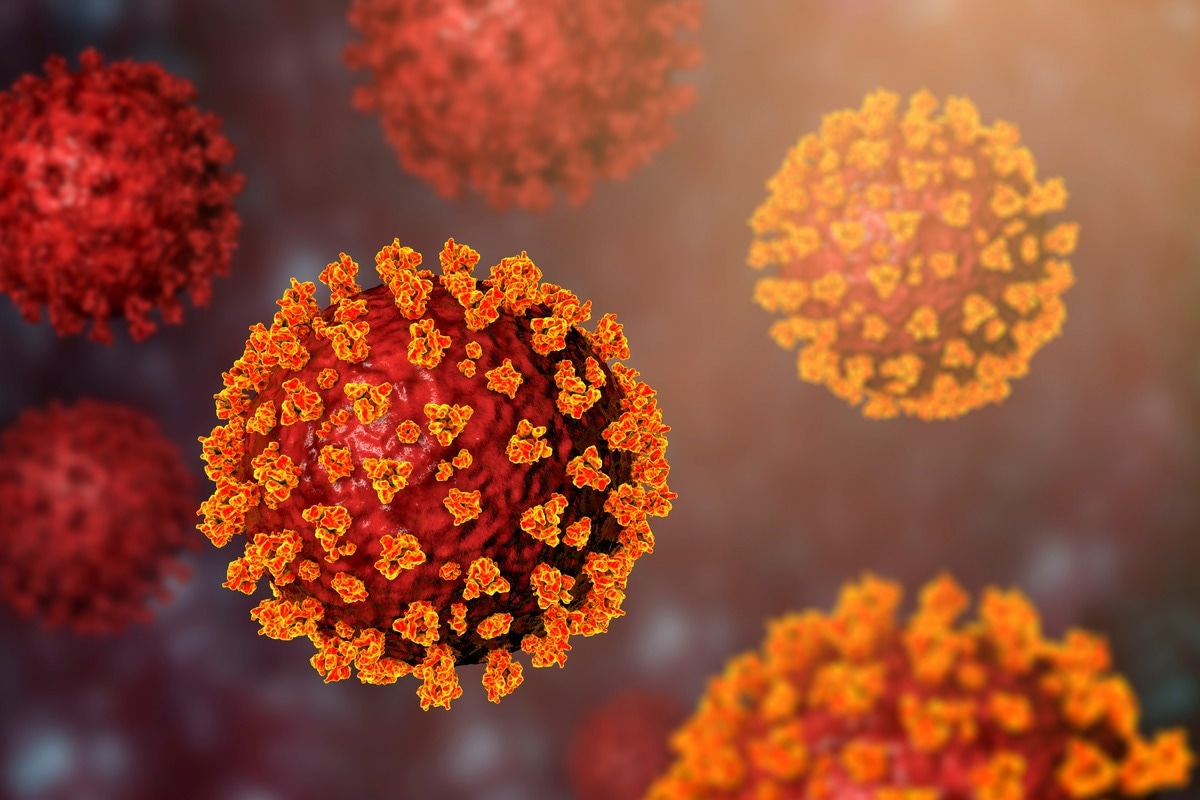In a recent study posted to PLOS Pathogens, researchers analyzed the structural function of the genetic background of severe acute respiratory syndrome coronavirus 2 (SARS-CoV-2) in the appearance and persistence of A222V spike (S) mutation.
 Study: The structural role of SARS-CoV-2 genetic background in the emergence and success of spike mutations: The case of the spike A222V mutation. Image Credit: Kateryna Kon/Shutterstock
Study: The structural role of SARS-CoV-2 genetic background in the emergence and success of spike mutations: The case of the spike A222V mutation. Image Credit: Kateryna Kon/Shutterstock
Background
The emergence of new SARS-CoV-2 strains has significantly defined the CoV disease 2019 (COVID-19) pandemic's trajectory from early 2020. The SARS-CoV-2 20E (EU1) variant discovered in Spain at the start of summer 2020 bore the S: A222V point mutation inside the G clade. Since then, the Delta sublineage AY.4.2 has exhibited this mutation again, raising concerns regarding its precise impact on viral infection. Numerous scientific works have focused on figuring out how to explain, comprehend, and forecast what will happen to specific mutations across the SARS-CoV-2 genome as they evolve.
About the study
In the present article, the scientists focused on a specific SARS-CoV-2 S protein mutation, A222V, that appeared initially in mid-2020 in Spain and appeared again autonomously in the Delta AY.4.2 subvariant following a year. The team looked into potential processes connecting A222V with biologically significant outcomes because reemerging mutations frequently point to an evolutionary benefit. They utilized serological, structural, functional, and computational techniques to recognize substantial molecular-level variances brought about by A222V.
The investigators used S: A222V as an exemplar of a mutation that has occurred more than once in the SARS-CoV-2 S protein in various genetic backgrounds without being accompanied by a higher epidemiological fitness. The success of these novel mutations in the population may be predicted by following the interactions with the genetic heritage in which they emerge (epistasis).
The authors employed a substantial genomic dataset detailing the population dynamics of S: A222V throughout SARS-CoV-2 lineages to explain the function of this variant. They also investigated the role of the genetic basis by combining the S: A222V and S: D614G mutations in neutralization studies with pseudotyped viruses, accompanied by biophysical profiling of the mutant S.
The team reported a structural model and cryo-electron microscopy (cryo-EM) map of the 20E/EU1 and the frequent S: D614G mutant in 1-up conformation. Moreover, they combined molecular dynamics (MD) and cryo-EM simulations to determine the functional role of the mutation.
Results
The authors observed significant molecular-level variations brought about by A222V that may explain why it repeatedly emerged in various genetic backgrounds in SARS-CoV-2. The study results illustrated subtle modifications to the receptor-binding domain's (RBD) dynamic behavior in the binding-proficient up conformation between S: A222V and S: D614G mutants. These modifications impacted the receptor attaching and interacted with other mutations by altering the accessibility of crucial residues implicated in molecular recognition.
Present findings demonstrated that, despite not increasing the SARS-CoV-2 S protein's stability, S: A222V did somewhat boost its affinity for the host receptor, angiotensin-converting enzyme 2 (ACE2). This increased affinity was caused mainly by a higher association constant (kon) congruent with the heightened flexibility of the RBD in the 1-up configuration, as revealed by both cryo-EM and MD experiments.
The study data backed the hypothesis that a more prominent RBD uncoupling from its nearby N-terminal domain (NTD) occurred for the S: A222V + S: D614G mutant relative to the S: D614G mutant alone. This impact might be from a low conformational pressure placed on 1-up conformation RBD by the NTD due to the decreased number of associations between these two domains across the S: A222V + S: D614G mutant. Notably, this pattern was seen consistently in the simulated glycosylated and glycan-free systems.
Further, a mutational free energy assessment failed to depict a thermodynamic selection for the open conformation between S: A222V + S: D614G and S: D614G mutants. This inference might imply that even though the S: A222V + S: D614G mutant may have a bigger RBD opening, it may not be linked to a substantial energy gain.
Conclusions
On the whole, the present study indicated that the S: A222V mutation in the NTD of the SARS-CoV-2 S sequence can cause minor but detectable allosteric impacts in the RBD, which translate into alterations in its conformational dynamics and biophysical properties. These findings support the S: A222V's recall across lineages, waves, and space, pointing to a potential role for positive selection.
Nevertheless, the genetic context in which the mutation arises appears to be essential for its viability, and the epidemiological implications of the S: A222V mutation may be influenced by epistatic contacts between mutations, with S: T478K and S: L452R also possibly impacting the activity of the open RBD. The current work moves closer to answering the question of how to forecast the cumulative effect of various mutations on various backgrounds by identifying a precise way in which S: A222V influences important SARS-CoV-2 S protein features.